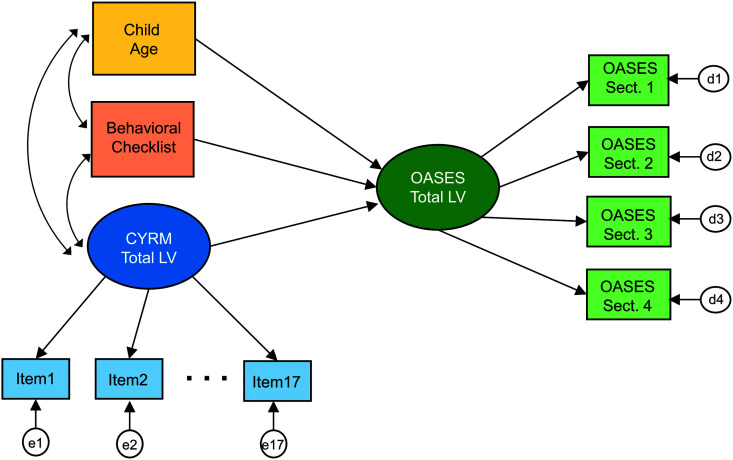Figure 1.
Schematic diagram of the structural equation modeling framework used in the statistical analysis. The ovals represent latent (unobserved) variables, and the rectangles represent manifest (observed) variables. The e1–e17 terms represent measurement errors for the 17 CYRM-R items. The d1–d4 terms represent measurement errors for the four OASES sections. Curved, two-headed arrows represent covariances. Independent variables are allowed to covary as is standard in multiple variable regression. Straight, single-headed arrows represent direct paths (regression coefficients). OASES = Overall Assessment of the Speaker's Experience of Stuttering; CYRM = Child Youth and Resilience Measure; LV = latent variable.

